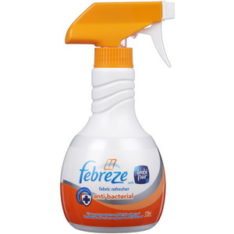Why brands should use selective hearing when listening to consumer feedback
In this guest column Antony Giorgione considers Adam Ferrier’s piece on evolving a brand, and says that while there is no guaranteed method for isolating insight, asking consumers what they think is a good start to the conversation.
 The other day Adam Ferrier wrote a piece around the subject of consumer feedback. In it he stated: “If you find yourself asking the consumer about your potential new product you are more than likely asking the wrong person.”
The other day Adam Ferrier wrote a piece around the subject of consumer feedback. In it he stated: “If you find yourself asking the consumer about your potential new product you are more than likely asking the wrong person.”
While I don’t necessarily disagree with that statement, I think there is an important qualification that needs to be made. To illustrate my point, I’ll present a summary of a case study by Charles Duhigg from the New York Times.
 When Febreze was first introduced, it was a marketing failure. Proctor and Gamble had developed what seemed like a useful new product – a liquid spray that eliminates odours in household fabrics.
When Febreze was first introduced, it was a marketing failure. Proctor and Gamble had developed what seemed like a useful new product – a liquid spray that eliminates odours in household fabrics.
In selected markets during the testing phase, they ran TVCs depicting scenarios where an unpleasant smell was eliminated by this new spray – on a jacket smelling of cigarettes, on a couch recently vacated by the family dog.


There’s huge skill involved in being able to interpret what consumers want to say.
P&G are as bad as many marketers at letting junior people set questions to be explored in research and after hearing first focus group responses, think they understand the answers.
Terry, can’t agree more about the skill level required.
I can’t speak to P&G’s present methodologies, but with the Febreze scenario it needs to be remembered that they had created a new product category. Charles Duhigg noted that initially P&G tried to create a new habit in the consumer, but found success instead in ‘piggybacking’ onto an established habit loop.
There is the sometimes-true trope that innovators aren’t necessarily the ultimate winners – Kodak and the digital camera for example – but in the above scenario it appears that P&G were able to sort things out for themselves, though I imagine they would have preferred to have got it right the first time.